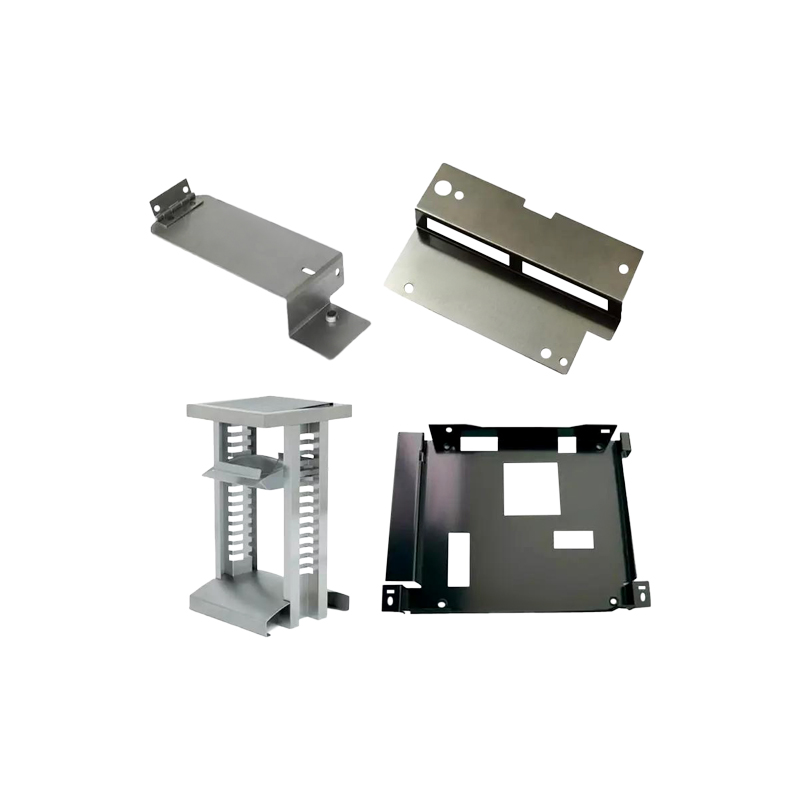Home / News / Industry News / What post-processing treatments are available for metal stamping parts?
Post-processing treatments for metal stamping parts are crucial for enhancing their performance, appearance, and longevity. Here are some common post-processing treatments:
Deburring: After the stamping process, sharp edges, and burrs may be left on the metal part. Deburring involves the removal of these unwanted edges and burrs using specialized tools or methods such as tumbling, grinding, or chemical deburring. This process not only enhances the appearance of the part but also ensures safety by eliminating sharp edges that could cause injury during handling or use.
Heat Treating: Heat treating encompasses a range of processes aimed at altering the physical and mechanical properties of the metal. Annealing, for example, involves heating the metal to a specific temperature and then slowly cooling it to relieve internal stresses, improve ductility, and refine grain structure. Quenching rapidly cools the metal to achieve high hardness, while tempering reduces brittleness and increases toughness by reheating the quenched metal to a lower temperature. Heat treating can significantly enhance the strength, hardness, and other mechanical properties of stamped parts to meet specific performance requirements.
Plating: Plating involves applying a thin layer of metal onto the surface of the stamped part through electroplating or other deposition methods. Common plating metals include zinc, nickel, chromium, and cadmium. Plating serves multiple purposes, including enhancing corrosion resistance, improving surface hardness, providing decorative finishes, and facilitating soldering or brazing. Different types of plating offer varying levels of durability, aesthetics, and functionality, making them suitable for a wide range of applications and environments.
Powder Coating: Powder coating is a dry finishing process that involves electrostatically applying a finely ground powder to the surface of the metal part, followed by curing in an oven to form a durable, protective coating. Powder coatings offer advantages such as corrosion resistance, impact resistance, and color retention, as well as the ability to achieve uniform and consistent finishes. Powder coatings are environmentally friendly, as they produce minimal waste and contain no volatile organic compounds (VOCs).
Anodizing: Anodizing is an electrochemical process that enhances the corrosion resistance, wear resistance, and aesthetic appearance of aluminum and other non-ferrous metals. During anodizing, the metal part is immersed in an electrolyte solution and subjected to an electric current, which causes a controlled oxidation reaction to occur on the surface, forming a thick, porous oxide layer. This oxide layer can then be dyed to achieve various colors and sealed to improve durability and resistance to environmental factors.
Painting: Painting involves applying liquid paint to the surface of the metal part using techniques such as spraying, dipping, or brushing. Paint coatings provide protection against corrosion, abrasion, and UV exposure, while also allowing for customization of color and appearance. Various types of paint formulations are available, including epoxy, polyurethane, acrylic, and enamel, each offering different levels of durability, chemical resistance, and weatherability to suit specific application requirements.
Polishing: Polishing is a mechanical finishing process that involves smoothing the surface of the metal part to achieve a high level of reflectivity, smoothness, and aesthetic appeal. Polishing can be performed using abrasive materials such as abrasive belts, wheels, or compounds, which gradually remove surface imperfections and scratches to produce a mirror-like finish. Polishing not only enhances the appearance of the part but also improves its cleanliness, corrosion resistance, and resistance to wear and friction.
Oem Sheet Metal Processing Bending Punching Manufacturing Process Laser Cutting Stamping Fabrication



 English
English 中文简体
中文简体 Español
Español ++86 13567131698
++86 13567131698










